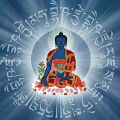Welcome home! Please contact lincoln@icrontic.com if you have any difficulty logging in or using the site. New registrations must be manually approved which may take several days. Can't log in? Try clearing your browser's cookies.
Gregory Schopen: Bones, Not Books
 Sile
Veteran
Sile
Veteran
From Sujato's blogpost, The Ironic Assumptions of Gregory Schopen:
"The methods and assumptions of Buddhist text-critical studies have come under challenge, indeed frontal assault, by the influential academic Gregory Schopen...[Schopen] criticizes the assumption of modern scholars that the study of Buddhism may be equated with the study of its texts, and instead proposes that the archaeological evidence should be granted priority....As far as the results of research are concerned, Schopen says that the record of the bones and stones depicts a very different type of Buddhist monastic, one who is more worldly and human than the caricature of the ascetic hero striving for Nibbana alone in the forest."
http://sujato.wordpress.com/2011/01/22/the-ironic-assumptions-of-gregory-schopen/
"The methods and assumptions of Buddhist text-critical studies have come under challenge, indeed frontal assault, by the influential academic Gregory Schopen...[Schopen] criticizes the assumption of modern scholars that the study of Buddhism may be equated with the study of its texts, and instead proposes that the archaeological evidence should be granted priority....As far as the results of research are concerned, Schopen says that the record of the bones and stones depicts a very different type of Buddhist monastic, one who is more worldly and human than the caricature of the ascetic hero striving for Nibbana alone in the forest."
http://sujato.wordpress.com/2011/01/22/the-ironic-assumptions-of-gregory-schopen/
0

Comments
"[Schopen] is primarily interested in the ‘Middle Period’ of Indian Buddhism, that is, the five hundred years or so from the beginning of the Common Era. He uses the remnants of monasteries, stupas, graves, etc., together with Vinaya material, primarily from the Mūlasarvāstivāda Vinaya in Tibetan...which he says stems from the same period and depicts much the same activity."
Wiki gives:
"The Mūlasarvāstivāda was an early school of Buddhism, developed in India during the 2nd century AD and in decline by the 7th century....Its vinaya texts are extant in Tibetan (9th century translation)..."
So I believe "stems from the same period" refers to the Tibetan material in the sense that, as a translation, it preserves earlier material now lost.
"The Mulasarvastivada Vinaya typically represents a segment of northern Indian Buddhism, from say 200CE-500CE. It is today the canonical Vinaya in central Asian Buddhism, including Tibet, and Schopen relies on the Tibetan and Sanskrit sources."
http://sujato.wordpress.com/2010/07/10/who-owns-a-monastery-in-the-mulasarvastivada-vinaya/
The Tripitaka [Pali: Tipitaka] is the Canon of the Buddhists, both Theravada and Mahayana. Thus it is possible to speak of several Canons such as the Sthaviravada, Sarvastivada and Mahayana as well as in term of languages like Pali, Chinese and Tibetan. The word is used basically to refer to the literature, the authorship of which is directly or indirectly ascribed to the Buddha himself.
It has long been claimed that the Buddha, as he went about teaching in the Gangetic valley in India during the 6th and 5th centuries B.C.E., used Magadhi...attempts have been made to identify this Magadhan dialect with Pali, the language in which the texts of the Sthaviravada school are recorded. Hence we speak of a Pali Canon, i.e., the literature of the Sthaviravadins which is believed to be the original word of the Buddha.
At any rate, this is the only complete recension we possess and the Pali texts seem to preserve an older tradition much more than most of the extant Buddhist works in other languages.
Besides this Pali recension of the Sthaviravada school there are fragmentary texts of the Sarvastivada or of the Mulasarvastivada which are preserved in Sanskrit. [What] could be referred to as a Sarvastivada Canon ranges between fragments of texts preserved in Sanskrit and the more representative collection of the Tripitaka preserved in Chinese. It may be mentioned here that a version of the Mulasarvastivada Vinaya consisting of seven parts, even more faithful than the Chinese version, is preserved in Tibetan.
http://www.buddhanet.net/e-learning/history/s_canon.htm